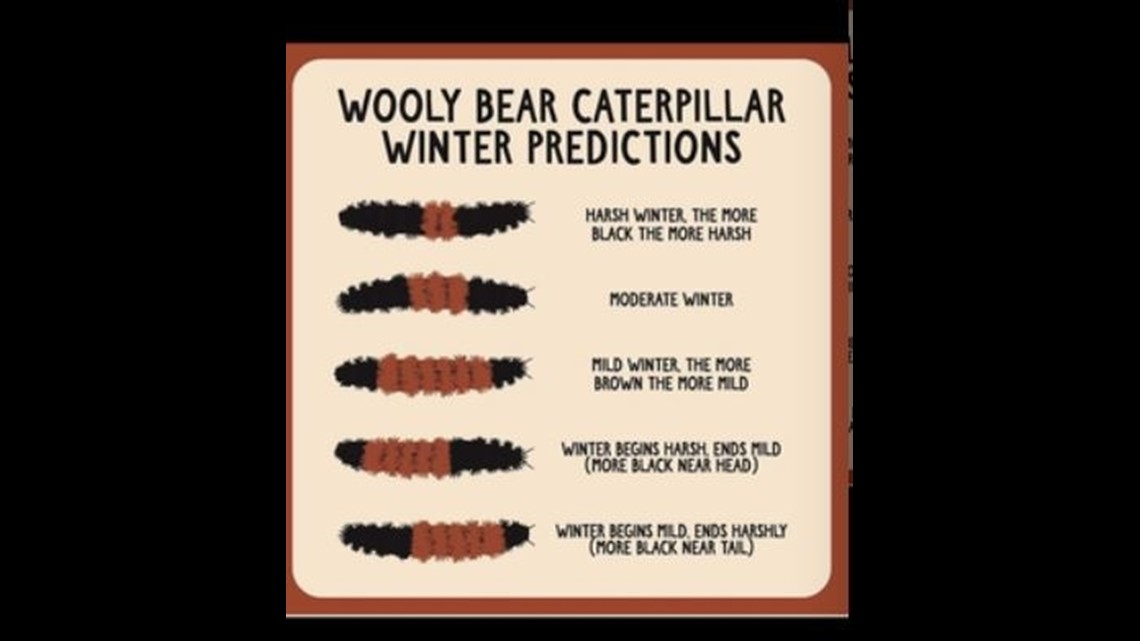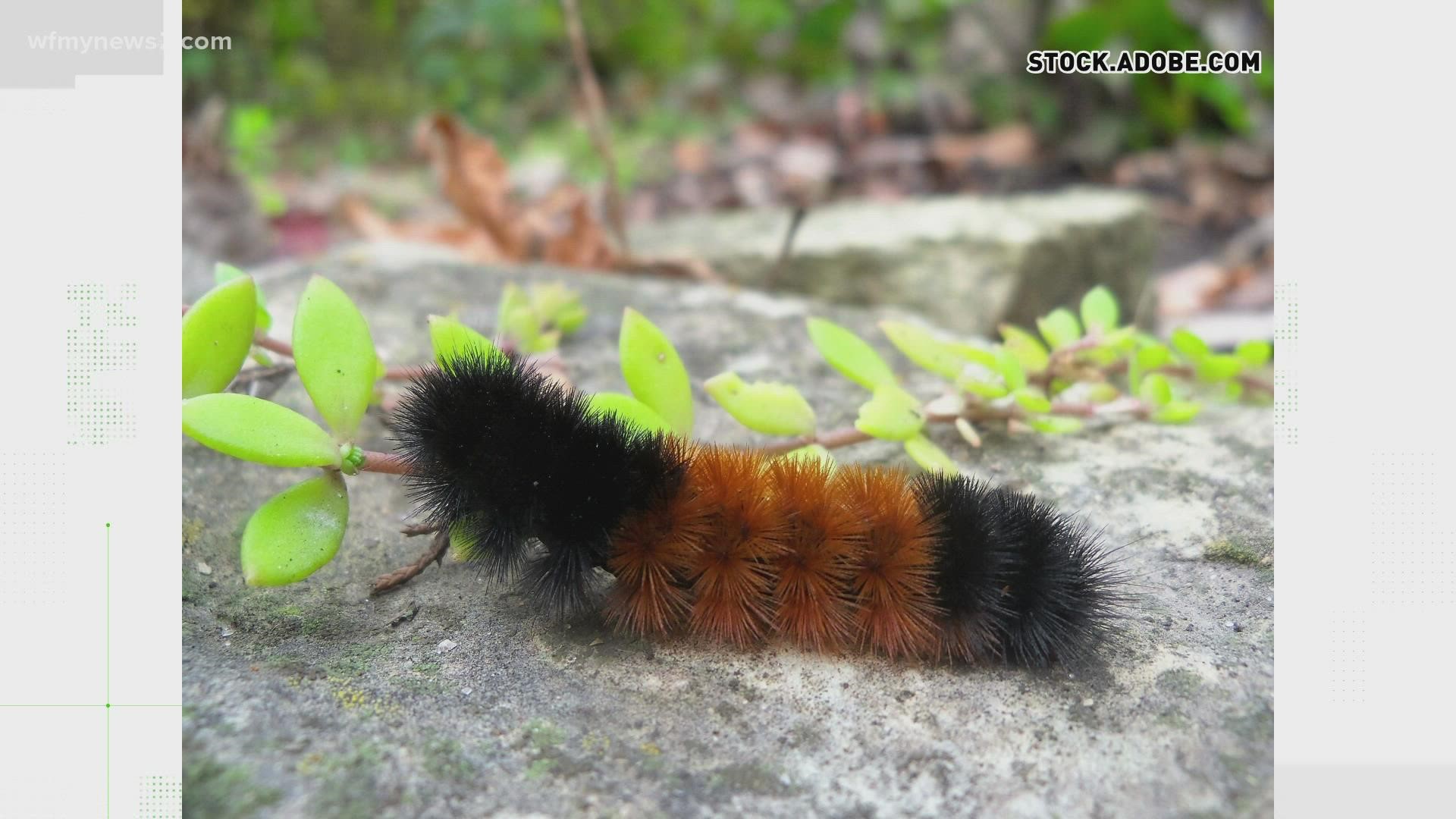GREENSBORO, N.C. — From groundhogs to persimmons, there are numerous non-scientific ways to predict what kind of winter we're going to have. The problem is these methods' far-from-perfect track record for accuracy.
THE QUESTION
Viewers Dennis and Jane Durham saw a post circulating Facebook and asked the VERIFY team to look into whether it's true.
It claims the coloration of the Woolly (sometimes spelled Wooly) Bear Caterpillars, also called Woolly Worms (though they're not worms) predicts the upcoming winter. If the Woolly Bear is mostly black, it means a harsher winter. If mostly brown, it means a milder winter. If brown at the head with more black near the tail, it means a winter that starts mild and ends harshly (and vice versa).


This question comes on the heels of North Carolina's annual Woolly Worm Festival in Banner Elk. Organizers of the event cite the Woolly Bear's 20-year accuracy streak. This year, the winning Woolly predicted a mild winter ahead.
THE SOURCES
- National Weather Service
- Frank Fowler - McNeely Pest Control biologist
THE ANSWER
No, Woolly Bear Caterpillars cannot predict the severity of the upcoming winter, but their coloring can indicate the harshness of the previous winter.
WHAT WE FOUND
Biologist Frank Fowler said, "There have been a lot of studies, a lot of folklore, about the Woolly Bear, and no studies have ever concluded they actually predict future weather events."
They can't tell the future, but they can remind us of the past.
"The coloration and the length of the bands do have a correlation to how severe the previous winter was. When they're born in the spring, they're all black, and the more warm growing season they have, the wider that round rust-colored band becomes in the middle," Fowler explained.
The National Weather Service notes the coloring indicates the age of the caterpillar. Each time it sheds its coat, it becomes redder. As for why the insects are so furry, Fowler said the coat protects them from freezing, down to -90 F.
Fowler said the Woolly Bear is a member of the Tiger Moth family, and although it's a pest, it isn't harmful. In fact, it might do you a favor and eat the weeds in your yard.
He said, "We need to enjoy them and celebrate them. Interestingly, they may be one of the only insects that has their own website!"
Do you have a VERIFY inquiry? Submit a post, screen shot or selfie video of the question to Meghann Mollerus via:
Facebook: Meghann Mollerus News
E-mail: VERIFY@WFMY.com
Twitter: @MeghannMollerus

